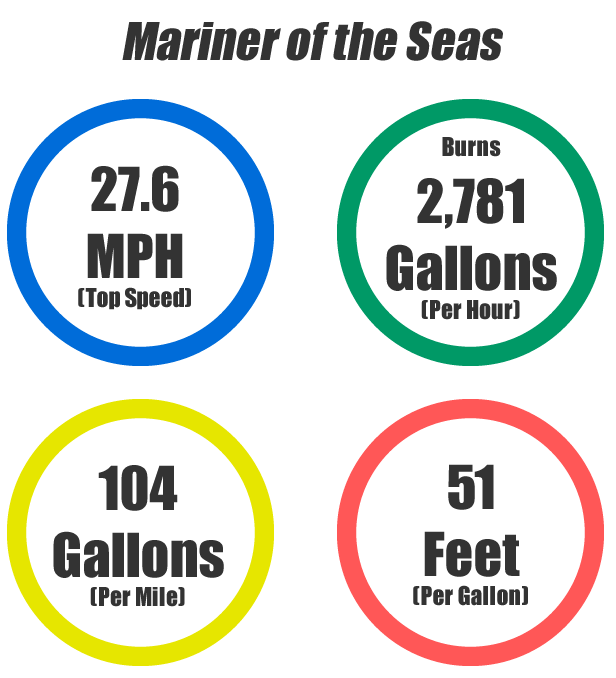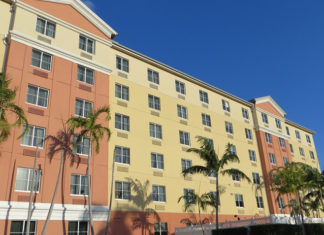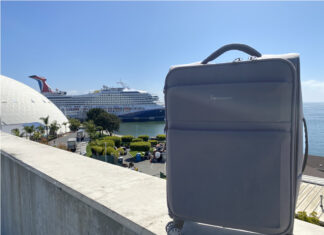There’s no other way to put it. Cruise ships are big. If you’ve never seen one in port, be prepared to be taken back by the sheer size.
It’s amazing that they can float at all — much less move. Surprisingly, cruise ships can move quickly. In fact, they likely can sail much faster than you realize.
The top speed for a ship will vary depending on the ship itself, but many can reach 25 knots per hour, or nearly 30 miles per hour. Sure, that’s a lot slower than a car. However, considering that ships can weigh more than 140,000 tons, it’s still impressive.
You might think that it takes a lot of fuel to be able to push that much weight nearly 30 miles per hour. According to a fact sheet distributed aboard Royal Caribbean’s Mariner of the Seas — a large ship, but by no means the largest in the cruise line’s fleet –, the ship has a top speed of 27.6 miles per hour (24 knots).
At that speed, the ship burns 2,871 gallons of fuel per hour. For comparison, a 20 gallon gas tank found in most passenger vehicles would be only enough to power the ship for just 25 seconds.
Consuming that much fuel at top speed, Mariner of the Seas burns a staggering 104 gallons just to go one mile.
Put another way, on just one gallon of fuel the ship travels 0.0096 miles. That comes out to about 51 feet on a single gallon. That’s about halfway between first and second base on a baseball field.

Now before you get too worried about the poor fuel mileage, keep in mind that more than 5,000 people are moving that distance between passengers and crew. When you think of moving each of those people 51 feet on a single gallon, it’s actually quite impressive.







Are there any Pacific cruises to Bora Bora or the Philippines?
LOL as if that’s the most effective way to cause damage with a tiny amount of fissile material. With SMR’s marine nuclear is developing rapidly.
They should make Cruise Ships run on Nuclear Power instead of Fossil Fuels, much like Aircraft Carriers and other Military Ships do…..
And then what will happen when one gets hijacked by terrorists, who decide to ram a major seaport with it and spread radioactive material around a large area?
We’d find that highly unlikely. It would also be the slowest hijacking ever.